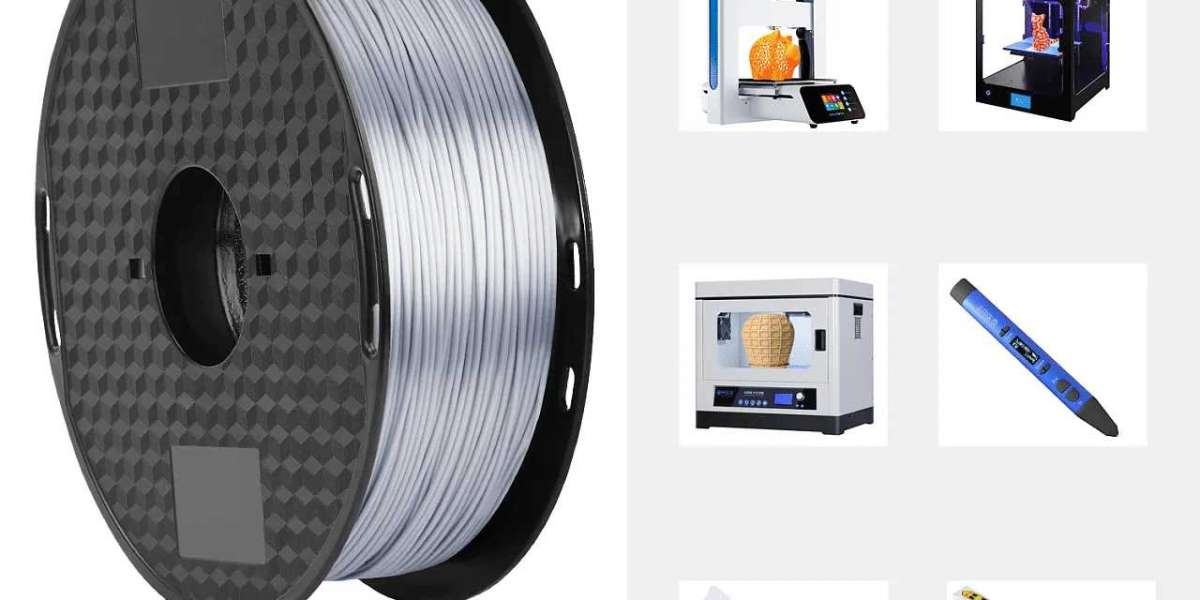The rapid development of 3D printing technology has led to the innovation and diversification of various printing materials, of which 3D printing filament as the most common consumable, its quality directly affects the performance and appearance of the final product. Therefore, it is particularly important to evaluate the quality standards of 3D printing filament.
First of all, observing the appearance of the filament is a fundamental step in assessing its quality.
By naked eye observation, you can initially determine whether there is color difference, internal bubbles, color uniformity, and whether there are black or other color spots. High-quality filament is usually uniform in color, without obvious impurities and bubbles. For example, PLA filament should be transparent or translucent, and the color should be consistent. In addition, the diameter uniformity of the filament is also one of the key factors, which can be measured by feeling or using digital calipers. The uniform diameter of the 3d printer filament can ensure the stability of the feed during the printing process, thus improving the printing accuracy.
Secondly, the performance of the printing process is also an important indicator to evaluate the quality of the filament.
At the beginning of printing, observe whether the print line on the substrate is uniform, in general, the uniform print line indicates that the precision of the filament is controlled within the range. In addition, listen to the sound of the filament through the gear feeding device during the printing process, the high-quality filament will not make a sound in normal operation, and the gear friction sound may be emitted when the filament is not uniform. At the same time, observe the uniformity of the internal structure of the filament in printing, and whether there are bubbles, spots and other problems during discharging.
Third, the physical and chemical properties of materials are one of the core criteria for evaluating the quality of 3D printing filament.
This includes the strength, toughness, temperature resistance, corrosion resistance and so on. For example, metal materials such as bronze, red copper, steel and stainless steel filament contain a high proportion of metal powder (usually about 80%), capable of printing a finished product with a metallic luster, which is usually superior to ordinary PLA material in strength and hardness. Carbon fiber materials, with their high strength, low shrinkage and lightweight characteristics, are suitable for applications requiring high rigidity and lightweight.
In addition, the printing parameters of 3D printing filament are also an important aspect of evaluating its quality.
Different filament requires different printing parameters, such as nozzle temperature, heating plate temperature, etc. For example, the nozzle temperature of PLA filament is usually between 190-210°C, while carbon fiber filament requires a higher temperature, about 240-260°C. Appropriate printing parameters can ensure that the filament is fully melted during the printing process, so as to obtain better printing results.
Finally, the environmental protection and sustainability of 3D printing filament is also one of the important criteria for evaluating its quality.
Because PLA filament is made of plant raw materials (such as corn), it has the characteristics of environmental protection and non-toxic, and no irritating odor when printing, which is in line with the trend of modern green manufacturing. Therefore, in the selection of filament, its environmental performance is also a factor that cannot be ignored.
To sum up, the quality standards for evaluating 3D printing filament need to be comprehensively considered from many aspects such as appearance, printing process performance, physical and chemical properties, printing parameters and environmental protection. Only by comprehensively evaluating these factors can a high-quality 3D printing filament suitable for the specific application needs be selected, thus ensuring the quality and performance of the final printed product.



